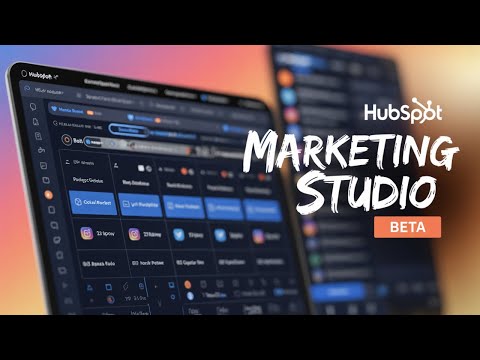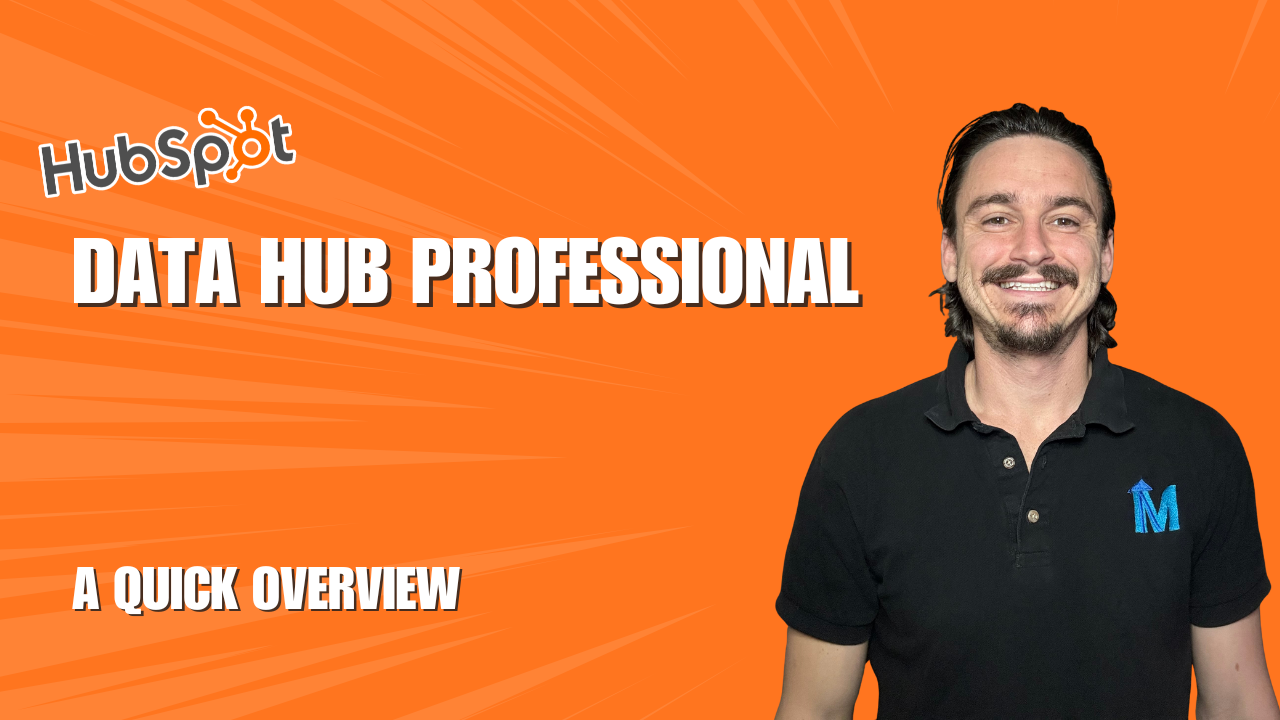HubSpot Marketing Studio Beta: Real-World Walkthrough, Features, and Why It Matters for Marketers

A practical walkthrough of HubSpot’s Marketing Studio beta — canvas-based campaign planning, attribution, AI help, and why you should
Introduction
HubSpot Marketing Studio (beta) is a major upgrade for teams that plan, run, and measure campaigns inside HubSpot. I ran a live Meta ads funnel in the beta for MergeYourData and tested it with clients. Below is a clear, practical walkthrough of what HubSpot Marketing Studio does, why it matters, and how to get value quickly.
Link to Full Video
If you want to watch the full walkthrough, take a look below:
What HubSpot Marketing Studio Fixes
Previous campaign tools inside HubSpot were passive: attach assets, view limited metrics, and move on.
HubSpot Marketing Studio shifts campaigns into an active, visual planning environment where strategy, assets, execution, and attribution all live in one unified space.
Key Features of HubSpot Marketing Studio (What You’ll Actually Use)
1. Canvas View (Visual Campaign Map)
• Visual paths from ads → landing pages → CTAs → forms → emails → next steps
• Inline metrics:
◦ Contacts generated
◦ Conversion rates
◦ CTA click rates
• Add or modify asset connections to show how everything fits together
2. Asset Management & Boards
• Add marketing and sales assets directly to the campaign
• Board view for:
◦ Drafts
◦ Scheduled
◦ Published
◦ Archived
• Table view to quickly scan asset performance
3. Campaign Overview & Brief
• Goals
• Target audience
• KPIs
• Core notes and strategic context
4. Calendar View
• Content publishing timeline
• Task scheduling
• Visual overview of key campaign dates
5. Performance Dashboard
• Spend
• Contacts generated
• Lifecycle stage counts
• Form conversions
• Page views
• Activity log showing updates, ownership, and changes
• Budget settings for planning
6. Attribution Models
• Toggle between:
◦ Contact-create attribution
◦ Deal-create attribution
◦ Revenue attribution (Marketing Enterprise)
• Compare how different assets contribute to contacts and revenue
7. Collaboration & Production Tools
• Create tasks inside the campaign
• Use HubSpot AI for content drafting
• Add comments for teammates
• Reduce context switching across teams
Why HubSpot Marketing Studio Matters (Practical Outcomes)
1. Faster Alignment Across Teams
• Marketing, sales, and RevOps can see the same real-time campaign map
2. Better Planning & Fewer Missed Opportunities
• Visual structure reveals missing steps, duplicate efforts, and gaps before launch
3. Clearer Attribution
• Easily validate which channels and assets actually drive contacts and deals
4. Single-Pane Execution
• Plan, produce, publish, and measure in the same environment
• Removes the “plan in one tool, execute in HubSpot” drift
When You Should Try HubSpot Marketing Studio
Highly Recommended If You:
• Use Marketing Pro or Marketing Enterprise
• Run multi-step funnels (ads → landing page → nurture → offer)
• Manage many assets, pages, emails, and handoffs
• Struggle with scattered documentation or unclear ownership
Strong Early-Test Fit:
• Teams wanting to visualize conversion paths
• Teams frustrated by fragmented reporting
• Anyone needing cleaner asset organization
How I Tested HubSpot Marketing Studio
• Ran a Meta ads funnel for MergeYourData
• Tracked:
◦ Landing page contacts
◦ Form conversions
◦ CTA click rates
• Monitored spend vs. lifecycle changes in the performance tab
• Found the visual canvas dramatically better than the old Campaigns “bucket” model
Quick Implementation Checklist
Step 1: Turn on HubSpot Marketing Studio in your HubSpot Marketing navigation.
Step 2: Build your campaign canvas (ads → LPs → CTAs → forms → emails).
Step 3: Attach existing assets and create missing ones with HubSpot AI.
Step 4: Write a campaign brief with goals, KPIs, and publishing windows.
Step 5: Select your attribution model based on campaign goals.
Step 6: Review performance weekly; adjust budgets and creative based on real data.
Tips and Traps (Real-World Advice)
Tips:
• Use the board view to run content sprints and editorial workflows
• Let AI generate first drafts, then refine with SMEs
• Keep your campaign brief updated — it becomes your team’s source of truth
Traps:
• Don’t trust default attribution without toggling models
• If lifecycle stages or deal-create rules are fuzzy, revenue attribution will be noisy
• Don’t leave assets unconnected — your data will look incomplete
Bottom Line
HubSpot Marketing Studio transforms campaigns from passive containers into visual, dynamic plans with real attribution insights. If you use Marketing Pro or Marketing Enterprise, you should test the beta immediately. It reduces confusion, centralizes campaign execution, and turns planning into a repeatable, scalable process.
Want Help Launching HubSpot Marketing Studio?
If you want expert help with HubSpot automations, integrations, or campaign setup inside HubSpot Marketing Studio, book time with us:
https://www.mergeyourdata.com/hubspot





